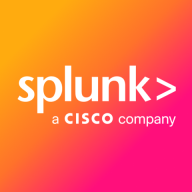

Splunk AppDynamics and Google Cloud's operations suite compete in the application performance monitoring category. AppDynamics appears to have the upper hand with its comprehensive monitoring capabilities and real-time insights, while Google Cloud's operations suite has streamlined integration with Google Cloud but lacks some depth in application performance monitoring.
Features: Splunk AppDynamics offers advanced application monitoring with transaction tracking, Java and .NET monitoring, and comprehensive JVM insights, along with automatic baseline creation. Google Cloud's operations suite provides seamless integration with Google Cloud, focusing on monitoring, logging, and tracing cloud and on-premise environments.
Room for Improvement: Splunk AppDynamics needs to simplify its interface and reduce setup complexity, while enhancing network monitoring integration. Google Cloud's operations suite would benefit from more detailed application performance monitoring and improved cost estimation transparency, along with better transaction tracking integration.
Ease of Deployment and Customer Service: Splunk AppDynamics supports diverse deployment models, including on-premises and hybrid clouds, with excellent technical support. Google Cloud's operations suite excels in Google Cloud deployments, providing reliable support, though it might falter in handling intricate hybrid setups compared to AppDynamics.
Pricing and ROI: AppDynamics is a premium option with substantial costs, justified by enhanced ROI through superior performance visibility. Google Cloud's operations suite offers more economical pricing but lacks the same ROI potential for detailed application insights as AppDynamics.
| Product | Market Share (%) |
|---|---|
| Splunk AppDynamics | 4.1% |
| Google Cloud's operations suite (formerly Stackdriver) | 1.0% |
| Other | 94.9% |


| Company Size | Count |
|---|---|
| Small Business | 2 |
| Midsize Enterprise | 1 |
| Large Enterprise | 8 |
| Company Size | Count |
|---|---|
| Small Business | 55 |
| Midsize Enterprise | 36 |
| Large Enterprise | 189 |
Real-time log management and analysis
Cloud Logging is a fully managed service that performs at scale and can ingest application and platform log data, as well as custom log data from GKE environments, VMs, and other services inside and outside of Google Cloud. Get advanced performance, troubleshooting, security, and business insights with Log Analytics, integrating the power of BigQuery into Cloud Logging.
Built-in metrics observability at scale
Cloud Monitoring provides visibility into the performance, uptime, and overall health of cloud-powered applications. Collect metrics, events, and metadata from Google Cloud services, hosted uptime probes, application instrumentation, and a variety of common application components. Visualize this data on charts and dashboards and create alerts so you are notified when metrics are outside of expected ranges.
Stand-alone managed service for running and scaling Prometheus
Managed Service for Prometheus is a fully managed Prometheus-compatible monitoring solution, built on top of the same globally scalable data store as Cloud Monitoring. Keep your existing visualization, analysis, and alerting services, as this data can be queried with PromQL or Cloud Monitoring.
Monitor and improve your application's performance
Application Performance Management (APM) combines the monitoring and troubleshooting capabilities of Cloud Logging and Cloud Monitoring with Cloud Trace and Cloud Profiler to help you reduce latency and cost so you can run more efficient applications.
Splunk AppDynamics enhances application performance monitoring with advanced diagnostics and real-time insights, offering seamless end-to-end transaction tracking and infrastructure visibility.
AppDynamics provides critical tools for businesses to analyze application behavior and performance. Through innovative features like transaction snapshot analysis and adaptable dashboards, users can quickly identify and address issues, ensuring high levels of system uptime and efficiency. It is designed to support complex environments including Kubernetes and AWS, enhancing user experience by detecting performance issues early. Despite needing improvements in network monitoring and integration, it remains a robust option for tracking application health.
What are the key features of AppDynamics?In industries like financial services and e-commerce, AppDynamics facilitates performance tracking across distributed systems, optimizing infrastructure to meet consumer demands. It excels in environments needing precise transaction monitoring and is pivotal in delivering high value and satisfaction.
We monitor all Application Performance Monitoring (APM) and Observability reviews to prevent fraudulent reviews and keep review quality high. We do not post reviews by company employees or direct competitors. We validate each review for authenticity via cross-reference with LinkedIn, and personal follow-up with the reviewer when necessary.